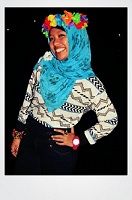Mech Arm Animation
Click on the hyperlink to view the videos.
Mech Arm Animation 1
Mech Arm Animation 2
Here are some screen shots of the processes that I have gone through in creating this Mech Arm animation. Step by step instructions were followed accordingly and closely with the help of Maya guide. It is quite easy to follow plus the Mech Arm model is already ready designed for us. I just have to understand how each and every steps affects the movement and reactions of the arm.
I learnt about skeleton joints where it allows the Mech Arm to bends, behaving like how mechanical robot bending supposed to be like. I also learnt about how important is the order of parenting which shows it thus have a the difference of which is the child and which is to be the parent. I were thought about the use of "Locator" and "Annotation" too. The locator is to help in manipulating the IK System, instead of using itself. This is also useful because they don't appear in the rendered image.
Functions like constrain > point and constrain > orient are new to me thus I get to learn how they work too. A point constrain is where another object can control another object's transformation attributes of an object.
.png)
1) Apart from their different sizes, it is obvious from Luxo Jr. that the big lamp is "older" and that the small lamp is "younger".
How is this communicated by the animation? Give at least THREE examples.
Do NOT say because that small lamp is playing with a ball, or that its name is Luxo Jr. - You should be looking at the animation, how the lamps move and emote (emote means to express emotions).
Answer:
Firstly, the speed of the "older" lamp is slower and the "younger" one is faster and more energetic in his moves. The "older" one also have a slow reaction and doesn't move around a lot compared to the "younger" one which kept running around while playing with the balls.
Secondly, the "older" lamp does not have much expression as the "younger" lamp as the "younger" lamp shows his expressions showed that he gets excited playing and going after the ball while the "older" lamp just stays stationary.
Thirdly, the "younger" lamp also jumps a lot while playing with the ball while the "older" one just pushed it once with lesser energy away from him.
2) Give an example from Luxo Jr of how timing is used for comic effect. Explain how the timing decisions contribute to the humour.
One example will be the part the "younger" lamp feeling happy playing the ball by showing that he shakes his back. The timing for that is very fast that makes it cute and funny at the same time.
3) When you create a joint chain, these form a hierarchy, with the first joint at the top and the last joint at the bottom. Explain why this is necessary for the joints to work properly.
Whatever joints that is at the top of the hierarchy, anything that are parented to it will go through the "follow through and overlapping" principle. Thus this is necessary for the joints to work properly of showing more natural motion of the characters.
Answer:
Firstly, the speed of the "older" lamp is slower and the "younger" one is faster and more energetic in his moves. The "older" one also have a slow reaction and doesn't move around a lot compared to the "younger" one which kept running around while playing with the balls.
Secondly, the "older" lamp does not have much expression as the "younger" lamp as the "younger" lamp shows his expressions showed that he gets excited playing and going after the ball while the "older" lamp just stays stationary.
Thirdly, the "younger" lamp also jumps a lot while playing with the ball while the "older" one just pushed it once with lesser energy away from him.
One example will be the part the "younger" lamp feeling happy playing the ball by showing that he shakes his back. The timing for that is very fast that makes it cute and funny at the same time.
3) When you create a joint chain, these form a hierarchy, with the first joint at the top and the last joint at the bottom. Explain why this is necessary for the joints to work properly.
Whatever joints that is at the top of the hierarchy, anything that are parented to it will go through the "follow through and overlapping" principle. Thus this is necessary for the joints to work properly of showing more natural motion of the characters.
.png)
.png)
.png)
.png)























